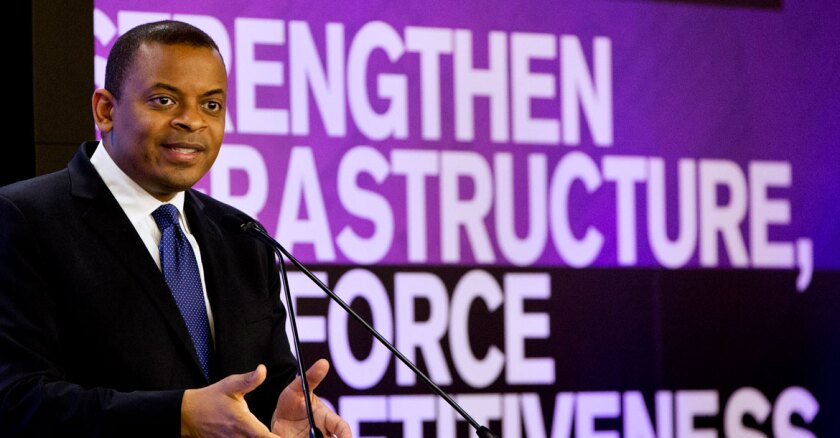Growing up in the shadow of two major Charlotte, N.C., freeways shaped how Anthony Foxx, former U.S. secretary of transportation, viewed infrastructure: both its power to connect communities to job centers and education and the danger it held to segregate communities. It became clear to him that the decision to route the freeway through his community was intended to carry people through the neighborhood, but not to his neighborhood. This early observation influenced Foxx’s thinking about the power of infrastructure.
Foxx got his start in politics at the local level, serving as a City Council member and later as the mayor of Charlotte. When asked by President Obama to head the Department of Transportation (DOT), Foxx recognized the opportunity to shift the paradigm in transportation, embracing technology to maximize infrastructure’s capacity to serve communities.
“I have made it a leading priority to ensure that we are using transportation in ways that connect historically underserved communities and people with opportunities, jobs, education and more,” Foxx said in his farewell message earlier this year.
Evidence of this commitment can be found in the 2014 DOTLadders of Opportunity grant program, which awarded funds to local transit agencies, prioritizing connecting disadvantaged and low-income individuals with job and educational opportunities, health care, and other vital services. But there’s more to it than building more roads and freeways. Foxx has championed the idea of embracing breakthroughs in technology to create a multimodal transportation system that works for everyone.
Under Foxx, the U.S. DOT released the Federal Automated Vehicles Policy, which outlines how autonomous vehicles can be safely integrated into the market, while citing the potential for driverless vehicles to increase mobility options for the aging, disabled and otherwise underserved. During his tenure, the department also recognized the potential for vehicle-to-vehicle communication to reduce roadway accidents.
The department’s Smart City Challenge, a $50 million competition aimed at getting local governments thinking about smart, integrated transportation systems, also benefited from Foxx’s leadership. The winning submission from Columbus, Ohio, included provisions for self-driving cars, connected vehicles and integrated smart sensors. But the 76 other cities that competed in the challenge advanced their plans for smart infrastructure too, exploring opportunities and forging new partnerships to develop next-generation transportation systems. And that was exactly the point.









